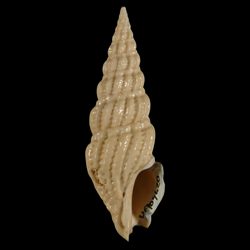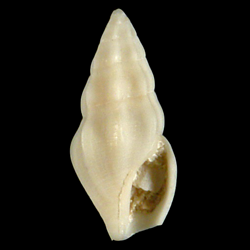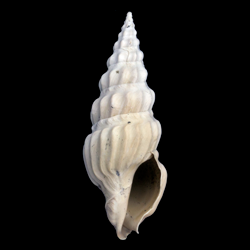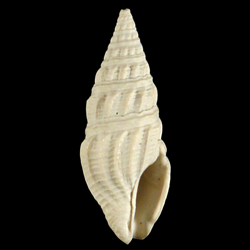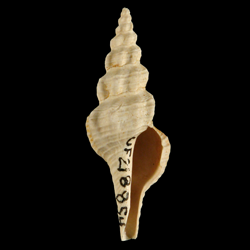
Drilliidae
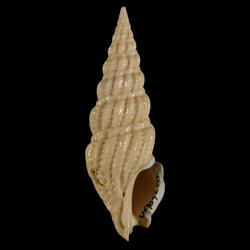
- Phylum: Mollusca
- Class: Gastropoda
- Order: Neogastropoda
- Family: Drilliidae
Overview
Common name: Drilliidae is one of several families in the Conoidea often referred to as turrid shells
Key morphological features: The Drillidae are gastropods with fusiform, high-spired shells. The protoconch size varies between species from 1.5-3 whorls. Exterior sculpture consists primarily of axial ribbing, but depending on the species may also include spiral cords or threads and most species develop a terminal varix when fully grown. The aperture interior is smooth and unoccluded (i.e., both columella and labrum are smooth), ranges in outline from narrow to more open and oval-shaped, and features a parietal callus on the posterior side. The anal canal is prominent and the siphonal canal ranges from short and notch-like to long. Source: Fallon (2016)
Geological range: Eocene to Recent (Paleobiology Database).
Geographic distribution: A distributional map for modern Drilliidae may be accessed from OBIS. A distributional map for ancient Drilliidae may be accessed from the Paleobiology Database.
Diversity: There are 513 recognized living species of Drilliidae and 35 genera (WoRMS database, unvetted). The Paleobiology Database recognizes 6 fossil genera and 17 fossil species of Drilliidae (unvetted). The current classification of Drilliidae was established in 2011 (Puillandre et al., 2011; Bouchet et al., 2011), so the low fossil diversity and geographic range in the Paleobiology Database is likely an artifact of the relatively recent improvement in our understanding of the classification of the Conoidea. A potentially more accurate representation of this gastropod family’s fossil record can be found on iDigBio.
Paleoecology: The extant Drilliidae are predatory marine gastropods that inhabit predominantly sandy substrates. Most species likely prey primarily on polychaete worms. They live in subtropical and tropical seas worldwide at shallow subtidal depths. Source: Harasewych, M.G., Moretzsohn, F. 2010. The book of shells. Chicago: The University of Chicago Press. 656 pp.
Phylogenetic status: Monophyletic. The molecular phylogenetic analysis of Puillandre et al. (2011) supports the monophyly of Family Drilliidae.
